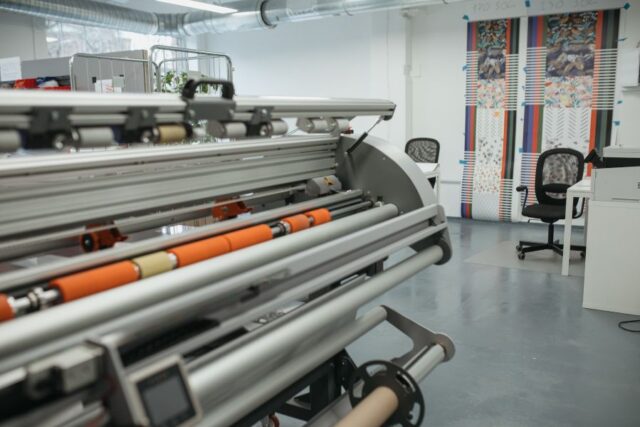Building a new production facility for your company is an exciting and difficult project to undertake. As entrepreneurs and business leaders, we understand the significance of a well-designed and efficiently operated production space. This blog post will guide you through the intricate process of building a new production facility, providing insights and practical tips to ensure your construction project is a resounding success.
The Importance Of Planning
The foundation of any successful construction project lies in meticulous planning. Before breaking ground, take the time to assess your business needs and objectives thoroughly. Consider factors such as production capacity, workflow optimization, and future expansion possibilities. Engage with architects and construction experts to translate your vision into a comprehensive plan that incorporates every aspect of your production facility, from the layout of workstations to the integration of cutting-edge technology.
Site Selection And Preparation
Choosing the right location demands a comprehensive analysis that extends beyond the physical space. Accessibility, proximity to suppliers and customers, and adherence to zoning regulations all play crucial roles. The ideal site should align with your business objectives and accommodate future expansion needs. Once the location is determined, thorough site preparation becomes paramount. Conducting soil tests and addressing environmental considerations ensure a stable foundation, mitigating potential issues down the line. Grading the site appropriately and taking proactive measures during the preparation phase contribute significantly to the overall efficiency of the construction process. In essence, meticulous site selection and preparation are the bedrock upon which a well-functioning and successful production facility stands, emphasizing the importance of strategic decision-making at this early stage.
Storage Solutions For Efficiency
Efficient storage is a cornerstone of any successful production facility. The implementation of racking shelving units provides an organized and space-efficient solution for storing raw materials, work-in-progress inventory, and finished goods. These units maximize vertical space, allowing for increased storage capacity without compromising accessibility. Consider the specific needs of your production process when selecting and configuring racking shelving units to optimize workflow and minimize disruptions.
Construction Timeline And Budget Management
Creating a realistic timeline and budget for your construction project is essential for its success. Collaborate closely with your construction team to establish a detailed schedule that accounts for each phase of the project—factor in potential delays and setbacks to ensure a flexible but achievable timeline. Similarly, a well-defined budget, including a contingency fund, will prevent financial surprises and enable you to navigate unforeseen challenges without jeopardizing the overall success of the construction.
Integration Of Sustainable Practices
The integration of sustainable practices in the construction of a new production facility is more than just an eco-friendly gesture; it’s a strategic move toward long-term resilience and responsible business operations. Sustainable practices encompass a range of considerations, from the use of environmentally friendly materials and energy-efficient technologies to the implementation of waste reduction strategies. By incorporating these practices, businesses not only contribute to global environmental efforts but also stand to benefit from cost savings through reduced energy consumption and waste disposal expenses. Moreover, the commitment to sustainability aligns with the values of an increasingly eco-conscious consumer base, enhancing a company’s reputation and marketability. Ultimately, the integration of sustainable construction practices is a forward-thinking investment that not only minimizes environmental impact but also positions businesses for success in a world where environmental stewardship is a growing priority.
Technology Integration For Enhanced Efficiency
Leveraging state-of-the-art manufacturing equipment, automation systems, and smart technologies can revolutionize traditional workflows, significantly reducing manual labor and minimizing production time. Real-time monitoring systems enable data-driven decision-making, providing invaluable insights into the production process. From predictive maintenance of machinery to the implementation of Industry 4.0 principles, technology integration ensures that your production facility remains agile and adaptable to evolving industry demands. Embracing innovation not only boosts operational efficiency but also positions your business at the forefront of a competitive market, setting the stage for sustained success and growth.
Safety Measures And Compliance
Ensuring the safety of personnel and maintaining compliance with industry regulations are non-negotiable aspects of constructing a new production facility. Establishing a robust safety culture starts with the development and enforcement of comprehensive safety measures. This includes conducting thorough risk assessments, implementing safety protocols, and providing regular training to all employees. Beyond internal safety standards, compliance with local, national, and international regulations is imperative. A keen understanding of industry-specific guidelines and legal requirements is essential to avoid potential legal ramifications and reputational damage. Regular safety audits and inspections are instrumental in identifying potential hazards and ensuring that safety measures remain effective over time. Prioritizing safety not only protects the well-being of the workforce but also contributes to the overall success and sustainability of the production facility. In essence, safety and compliance are not merely checkboxes on a construction project checklist; they are integral components that safeguard the people and the integrity of the facility itself.
Quality Control And Continuous Improvement
Quality control and continuous improvement are the cornerstones of a successful production facility, ensuring that products meet or exceed established standards while fostering an environment of ongoing enhancement. Quality control involves implementing stringent processes to monitor and evaluate each stage of production, from raw materials to the finished product. This meticulous scrutiny identifies deviations and allows for prompt corrective actions, guaranteeing that only high-quality goods reach the market. Concurrently, continuous improvement emphasizes the philosophy of never settling for the status quo. It involves regularly assessing and refining production methods, incorporating feedback from employees and stakeholders, and embracing innovative technologies. By fostering a culture of continuous improvement, businesses not only enhance product quality but also streamline operations, reduce waste, and stay agile in an ever-evolving market. In essence, the symbiotic relationship between quality control and continuous improvement is the driving force behind a production facility’s ability to deliver excellence consistently and adapt to the dynamic challenges of the business landscape.
By focusing on key elements such as storage solutions, construction timeline management, sustainability, technology integration, safety, and quality control, you can lay the groundwork for a successful and efficient production facility that will propel your business to new heights. As you navigate this exciting journey, remember that the investment in a well-designed and optimized production space is an investment in the future growth and prosperity of your business.














